HIIT: Is there a shortcut to exercise?
- Published
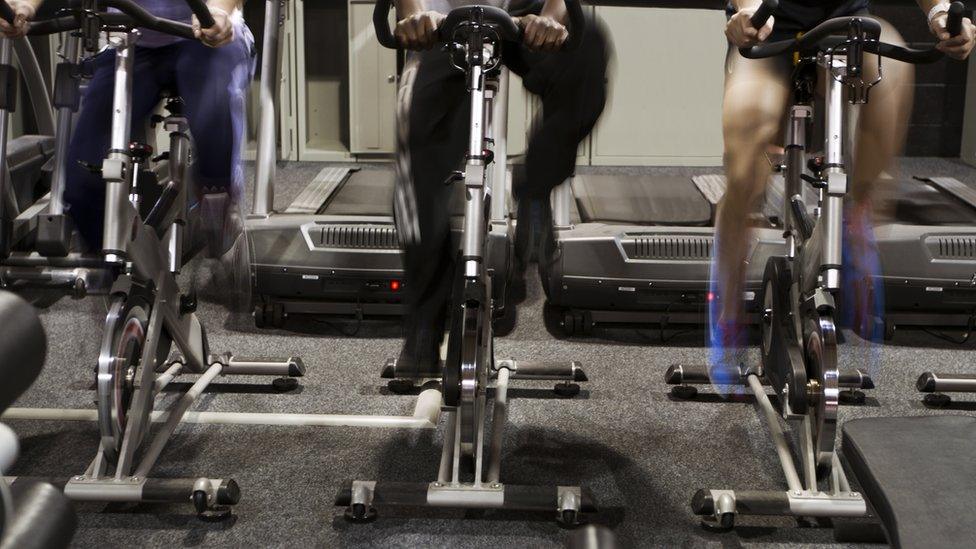
We all know that exercise is good for us, but often struggle to do the 150 minutes of moderate level activity a week that's recommended. So what's the alternative, asks Michael Mosley.
A few years ago, while making a Horizon documentary called The Truth about Exercise I was introduced to something which changed my life - HIIT or High Intensity Interval Training. Typically you do a few very short bursts of intense cycling on an exercise bike, with brief recovery periods.
The promise of HIIT is that you will get maximum benefit in minimum time - and that is certainly what I have found. But how well does it compare to other forms of exercise? With the help of researchers from Nottingham University we decided to find out.
We started by recruiting a group of 24 volunteers, aged between 40 and 60, who all have jobs and lifestyles that are best described as "pretty sedentary". We then divided them into four groups.
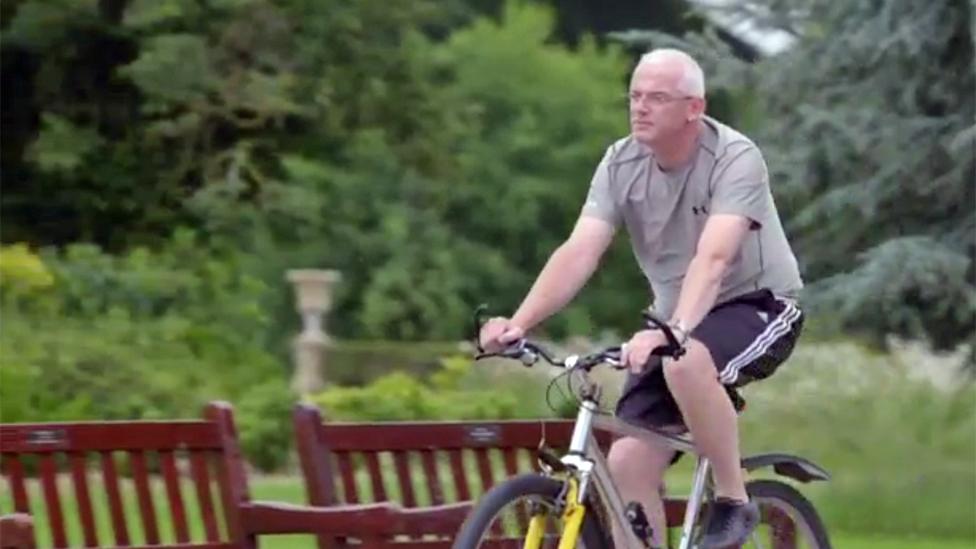
Some volunteers were asked to carry out 150 minutes of moderate exercise...
Our first group were asked to do 150 minutes a week of moderate-intensity physical activity. Something like jogging, where you start to sweat, but during which you could still have a conversation.
The second group were asked to do HIIT in controlled conditions, in a lab on a special bike. Unlike the first group they only had to do 15 minutes a week.
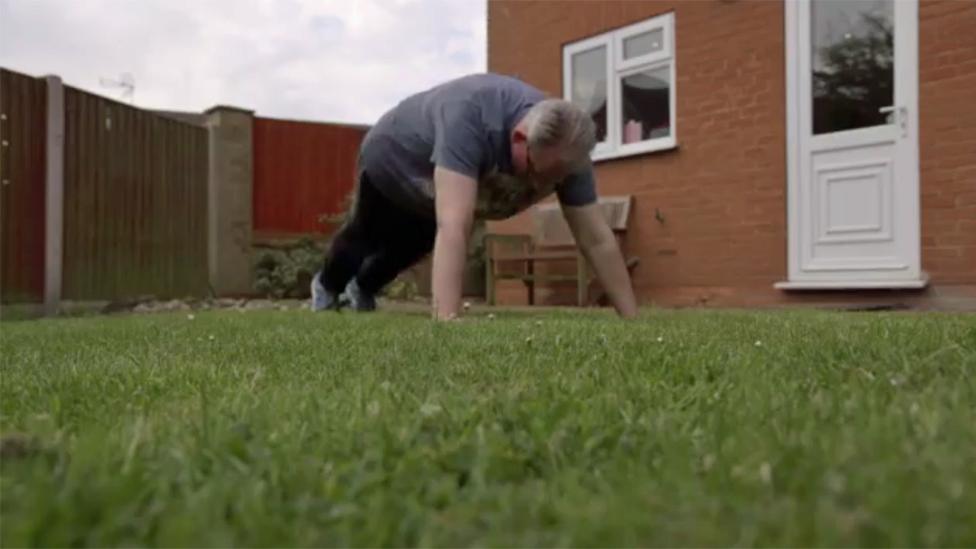
Others were asked to perform short bursts of high-intensity exercise at home...
Our third group were asked to do a home version of HIIT, specially created for us by the University of Nottingham. No special equipment, but they did have to do things like star jumps, burpees and mountain climbers.
Both our Lab and Home HIIT groups were asked to do three sessions a week. In each session they had to do five bursts of intense activity lasting 60 seconds, alternating with five 90-second rest periods.
Our fourth group were asked to do something which really didn't sound like exercise. They were simply asked to use something called a grip strength dynamometer. It's a bit like squeezing a tennis ball, except the machine tells you how much force you are exerting. They were asked to squeeze away at 30% of their maximum strength for two minutes, doing this four times with a two-minute rest between each squeeze.
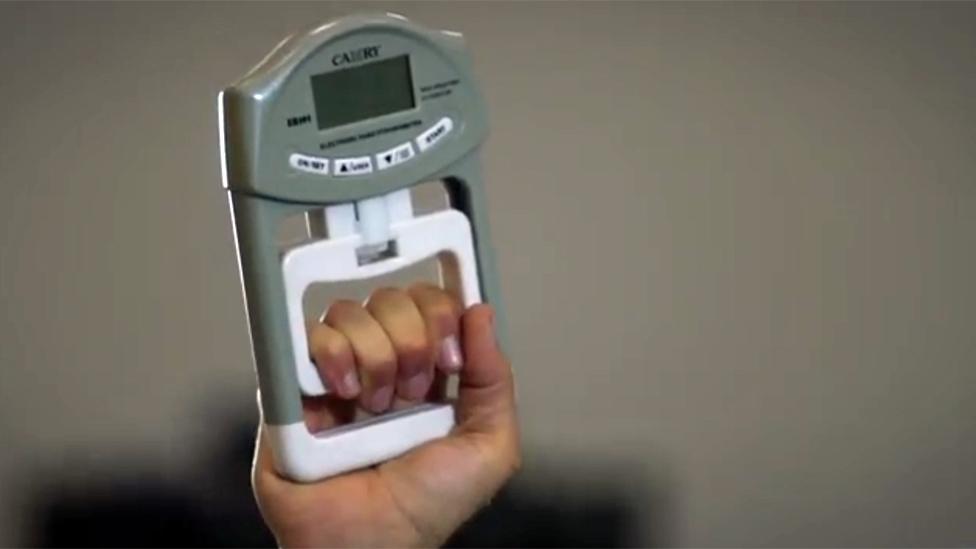
... and one group performed grip exercises
Before they started, our volunteers had their blood pressures measured. They also did what's called a VO2 max test, which measures aerobic fitness - how strong your heart and lungs are. It's a very good measure of overall fitness.
Then they went off to try and do their allocated regime for four weeks.
A month later we brought them together to repeat the tests and see how they had got on. Most had managed to stick to their regimes, though some of those we asked to do 150 minutes of moderate exercise a week said they had struggled to fit this into their busy lives. Some of those we had asked to do HIIT found it difficult to start with, but much easier to fit in.
Paul, for example, who lost weight and improved the arthritis in his back, said: "I spend up to four hours a day in the car and run a large business so to see the benefits I have, all in the time it takes to boil rice, has been amazing."

Find out more
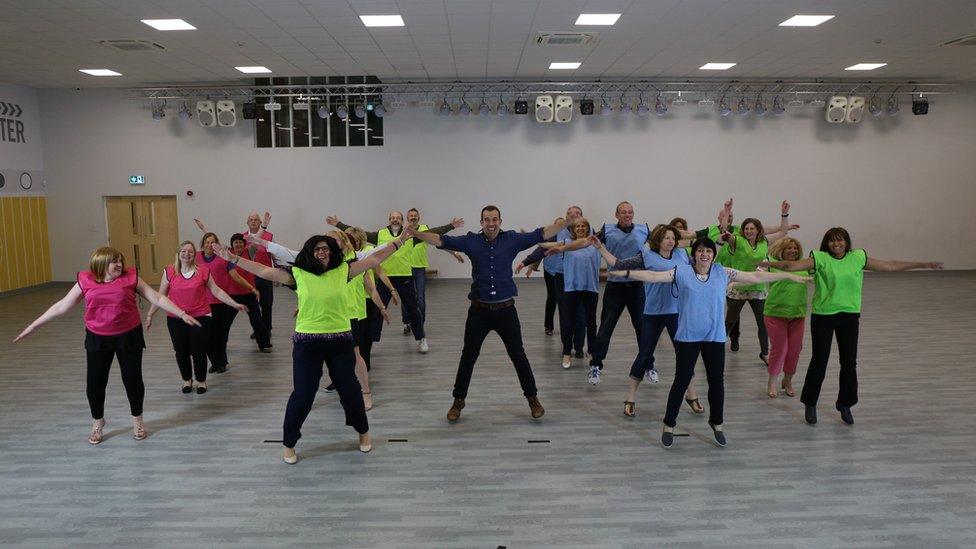
Trust Me, I'm A Doctor is on BBC Two, Thursdays at 20:00 BST - catch up on BBC iPlayer

Dr Beth Phillips, who helped us run the experiment, was surprised and delighted by the overall improvements:
"The volunteers who did HIIT in the lab improved their VO2 max by 17%, which is huge, a really significant increase. And following not too far behind with a 12% improvement were our Home Hitters. A 12% improvement in VO2 max is what you might expect from a much longer traditional endurance training."
In terms of overall fitness our lab HIIT team and our home HIIT-ers finished well above our moderate exercise group.
But perhaps the biggest surprise came from our hand-grip group.
"They were the only group," Beth said, "to demonstrate a significant and actually rather remarkable decrease in systolic blood pressure."
In fact our hand-grip team saw a massive 16% drop in their systolic blood pressure - a measure of the pressure in your arteries during contraction of you heart muscle. When you are given your blood pressure results your systolic BP is the larger number, typically around 120 mm Hg.
A drop in blood pressure of 16% is large, similar to the levels you might expect to see on medication and, if sustained , it could significantly cut your risk of having a heart attack or stroke.
High intensity interval training exercises you can do at home
Although it sounds unlikely, we have known for some time that hand-grip exercises can lower blood pressure. They were first studied in the 1960s, when fighter pilots were encouraged to do them to stop themselves blacking out while they were doing tight turns and dives, external. Researchers found that squeezing something helped keep blood pumping to the pilot's brain. It was later discovered that the pilots who consistently did hand-grip exercises also had lower resting blood pressures than those who didn't.
Nonetheless I found it remarkable that something as simple as grip exercises could have such a powerful effect - and I have added them to my existing HIIT regime.
There are risks to any new exercise regime, and if you are unfit or on medication it would be worth while getting a check-up before launching into an intense exercise regime. There are all sorts of different versions of HIIT, some of which are gentler than others. For a demonstration of the exercises that our volunteers undertook, you can go to the Trust Me I'm a Doctor website and find out more.
Follow @BBCNewsMagazine, external on Twitter and on Facebook, external